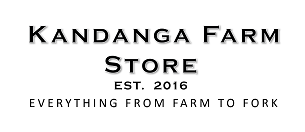Livestock
DE100 (also marketed as A-liminate) is a completely natural product (allowable organic input), composed of a high quality diatomite of the Melosira Granulata species derived from fresh water algae. The diatoms are characterized by their unique cylindrical shape and high porosity due to these characteristics A-liminate is a high performance and targeted feed additive. A-liminate is also characterized by its high and available silicon content. Diatomite has been used in animal feeds for decades, there has been a large amount of research on its benefits in animal production on a wide range of animal species.
1. Silicon as a Nutrient
DE100 releases orthosilicic acid, a form of Silicon that can be absorbed by animals Silicon is present in all body tissues, but the tissues with the highest concentrations of silicon are bone and other connective tissue including skin, hair, arteries, nails and hoofs. Dietary Silicon strengthens connective tissue and bones. The benefits of available silicon in an animal’s diet are well known. Deficiency symptoms of silicon are apparent because they are closely associated with the connective tissues. Poor development of bones, thinning of eggshells and poor coat development are often observed when animals are deficient in Silicon. Silicon is a non-metallic element that is not found naturally in its pure form, instead it reacts with water and oxygen to form silica and silicates e.g. quartz and clays. Although crystalline silica (quartz) and silicates are the most abundant materials on earth, they provide very little bio-available dietary silicon. The only form of silicon that animals can absorb effectively is in the form of orthosilicic acid.
Studies have shown that silicon plays a role in: The initial stages of bone development when the protein matrix is constructed. Silicon may also increase the rate of bone mineralization and enhance calcium deposition in bone, meaning the bone grows faster and
stronger. It induces flexibility in the bones and joints by increasing the amount of collagen, which is the protein component of bones. Silicon also increases the rate of healing of bone dislocations and fractures. Improve the egg quality of poultry Experiments have also observed that the diet of calves is not providing sufficient available silicon and supplementation is required.
2. Mycotoxin Binding
Diatomite has been shown to be an effective mycotoxin binder. Mycotoxins are secondary
metabolites produced by moulds and fungi, which are commonly found in a variety of feeds including grain, pasture, silage and straw. An acute mycotoxicosis can cause marked clinical effects and often death. However, contamination levels in feed tend not to be high enough to cause an overt toxicosis, but are more likely to create an array of metabolic disorders and pathological changes. Common symptoms include, reduced feed intake, scouring, lameness, reduced milk yield and lack of thriftiness. Research with A-liminate has demonstrated to be effective in poultry for managing the adverse effects of aflatoxin, DON and OTA. In-vitro work with A-liminate has also demonstrated to be effective in binding AfB1, ZEN, DON and ergot alkaloids.
3. Improved Feed Efficiency
Increased feed efficiency has been recorded in poultry with an inclusion of 1-2% diatomite in the feed. The mode of action is not well known, but is likely to be a combination effect of increased available silicon, mycotoxin binding and internal parasite control.
Species Feeding Rate:
Cattle 10-20g/hd/day
Small Ruminants 5-10g/hd/day
Horses 10-20g/hd/day
Swine 1-3kg/t
Poultry (broilers and layers) 1-3kg/t
Other species 1-3kg/t
Crops
Silica or silicon, a common but often overlooked element that is essential for soil and plant health, is just one of many ‘bio-essential’ minerals. It serves to strengthen cells, stem and the plant overall improving resistance to both abiotic stress (environmental factors - important with climate change) and biotic stress (pests - both above and below the surface). It helps to give greater resistance against drought and cold as well as greater pest resistance. The stronger the cell wall, the more stress-resistant the plant.
One of the stressors that is becoming more of an issue in many soils is the oversupply of heavy metals, salts and some trace minerals. In all cases, silicon has been shown to mitigate the stress. The addition of silica to such soils has been shown to have a very beneficial impact on photosynthesis.
Silica / silicon has been found to trigger the production of a suite of compounds that fuel an immune defence against pests by strengthening cells and is now regarded as an immune elicitor. As such it can also boost yields in a fertiliser-like effect.
The stronger the plant, the better the plant stands up and leaves stand out, the better its ‘solar panel’ leaves capture sunlight on the top side for photosynthesis and capture CO2 gas underneath as it rises from the roots and soil life. Silica also helps grain crops be less prone to lodging.
The nutrient paths through a plant for mineral uptake, absorption and translocation are largely built from silicon, so a deficiency of silica / silicon will adversely impact the performance of the plant.













